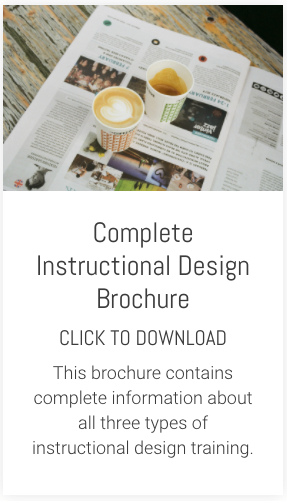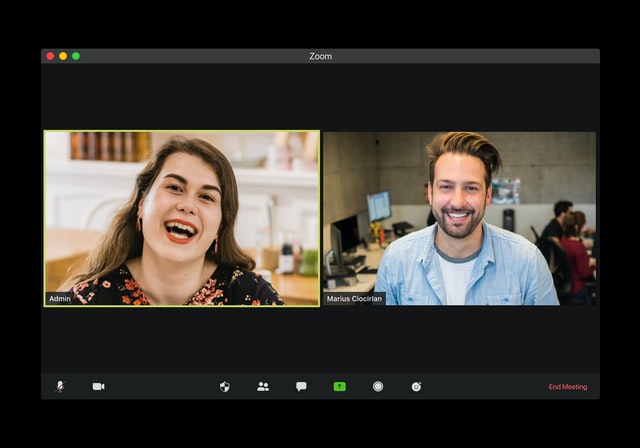It's 10.30 at night. I'm sat in front of my computer logged in as a participant on a webinar being run in the US.
No idea how many other people are taking part in this 'training' - but after two and half hours of non-stop lecture and 30 minutes to go before we reach the finishing line, my attention levels are at a low point. I've already snuck off to the loo a couple of times and made several cups of tea.
While the overall quality of the content is very good, the presentation is terrible and the interaction with the presenters zero. They spend so much time labouring each topic, it's easy to slip away for a couple of minutes and not to have missed much by the time you come back.
If you've had an online 'training' experience like this one, you'll understand why there is frequently such a gulf between an organisation's enthusiasm for the virtual classroom and the learners' lack of willingness to engage with it.
And organisations seem to be very enthusiastic. In 2009 an ASTD survey revealed that 23% of companies surveyed were using online learning compared with only 10% in 2003. An IITT survey here in the UK last year showed that 44% of companies surveyed anticipated making greater use of live online learning.
You can understand why. The cost and time savings are compelling and the technology is relatively cheap and easy to deploy. "What's not to like?" would be the question on the lips of many advocates.
In theory it should be attractive to learners, too. The opportunity to get more focused, bite-sized training with minimum convenience would seem like a no-brainer.
In practice, as my experience as a participant shows, for many learners online training is little more than a live, scheduled version of a deathly boring e-learning module - with minimal interaction.
But, as always, it doesn't have to be this way. There are three key factors involved in making live online training successful:
1. Is it a meeting, a webinar or a training session?
Seems obvious when written down in black and white, but many people planning and running live online sessions are not particularly clear on what type of session it is they are running.
An online meeting is a virtual equivalent of a face-to-face session where issues are discussed, information is shared and decisions are made.
A webinar is much closer to a live seminar or lecture - largely presenter focused with potentially large numbers of attendees and limited interactivity between presenter and audience.
A live online training session should aim to replicate what happens in a classroom. Trainer led, but with plenty of opportunity for activities and interactions between trainer and learners and between learners working in pairs or small groups.
2. Is your trainer ready for the challenge?
Understandably, many trainers feel that they can never replicate the real classroom experience online. You can't see the participants, you can't read their body language. They can't see you. How can it possibly work?
The reality is different. Taking exactly the kind of care you would over preparing and running a classroom event, it's perfectly possible to run a throughly engaging, effective and successful online event. It does take time, however, to adjust to a very different medium and understand how to do things somewhat differently in the virtual classroom.
3. Do you understand how to fully operate your virtual classroom?
One critical success factor is familiarity with the software you are using to deliver your virtual classroom event.
Unless you understand all the features and functions available to you, you'll never be able to design and deliver the best event you could. And this is no different, by the way, from taking into account all the different facilities, equipment and aids you have available when designing and delivering a classroom course.
One final point - not all software is created equal. Some systems have more sophisticated ways of enabling interaction than others - something to be very aware of when making a buying decision.
If your organisation is one of the 44% thinking about making use of (or perhaps wanting to make better use of) the virtual classroom, and you'd like to get best practice principles and hands-on experience of running a virtual event, we have several modules about virtual classroom design available in our impact and instructional design programme.
No idea how many other people are taking part in this 'training' - but after two and half hours of non-stop lecture and 30 minutes to go before we reach the finishing line, my attention levels are at a low point. I've already snuck off to the loo a couple of times and made several cups of tea.
While the overall quality of the content is very good, the presentation is terrible and the interaction with the presenters zero. They spend so much time labouring each topic, it's easy to slip away for a couple of minutes and not to have missed much by the time you come back.
If you've had an online 'training' experience like this one, you'll understand why there is frequently such a gulf between an organisation's enthusiasm for the virtual classroom and the learners' lack of willingness to engage with it.
And organisations seem to be very enthusiastic. In 2009 an ASTD survey revealed that 23% of companies surveyed were using online learning compared with only 10% in 2003. An IITT survey here in the UK last year showed that 44% of companies surveyed anticipated making greater use of live online learning.
You can understand why. The cost and time savings are compelling and the technology is relatively cheap and easy to deploy. "What's not to like?" would be the question on the lips of many advocates.
In theory it should be attractive to learners, too. The opportunity to get more focused, bite-sized training with minimum convenience would seem like a no-brainer.
In practice, as my experience as a participant shows, for many learners online training is little more than a live, scheduled version of a deathly boring e-learning module - with minimal interaction.
But, as always, it doesn't have to be this way. There are three key factors involved in making live online training successful:
1. Is it a meeting, a webinar or a training session?
Seems obvious when written down in black and white, but many people planning and running live online sessions are not particularly clear on what type of session it is they are running.
An online meeting is a virtual equivalent of a face-to-face session where issues are discussed, information is shared and decisions are made.
A webinar is much closer to a live seminar or lecture - largely presenter focused with potentially large numbers of attendees and limited interactivity between presenter and audience.
A live online training session should aim to replicate what happens in a classroom. Trainer led, but with plenty of opportunity for activities and interactions between trainer and learners and between learners working in pairs or small groups.
2. Is your trainer ready for the challenge?
Understandably, many trainers feel that they can never replicate the real classroom experience online. You can't see the participants, you can't read their body language. They can't see you. How can it possibly work?
The reality is different. Taking exactly the kind of care you would over preparing and running a classroom event, it's perfectly possible to run a throughly engaging, effective and successful online event. It does take time, however, to adjust to a very different medium and understand how to do things somewhat differently in the virtual classroom.
3. Do you understand how to fully operate your virtual classroom?
One critical success factor is familiarity with the software you are using to deliver your virtual classroom event.
Unless you understand all the features and functions available to you, you'll never be able to design and deliver the best event you could. And this is no different, by the way, from taking into account all the different facilities, equipment and aids you have available when designing and delivering a classroom course.
One final point - not all software is created equal. Some systems have more sophisticated ways of enabling interaction than others - something to be very aware of when making a buying decision.
If your organisation is one of the 44% thinking about making use of (or perhaps wanting to make better use of) the virtual classroom, and you'd like to get best practice principles and hands-on experience of running a virtual event, we have several modules about virtual classroom design available in our impact and instructional design programme.











